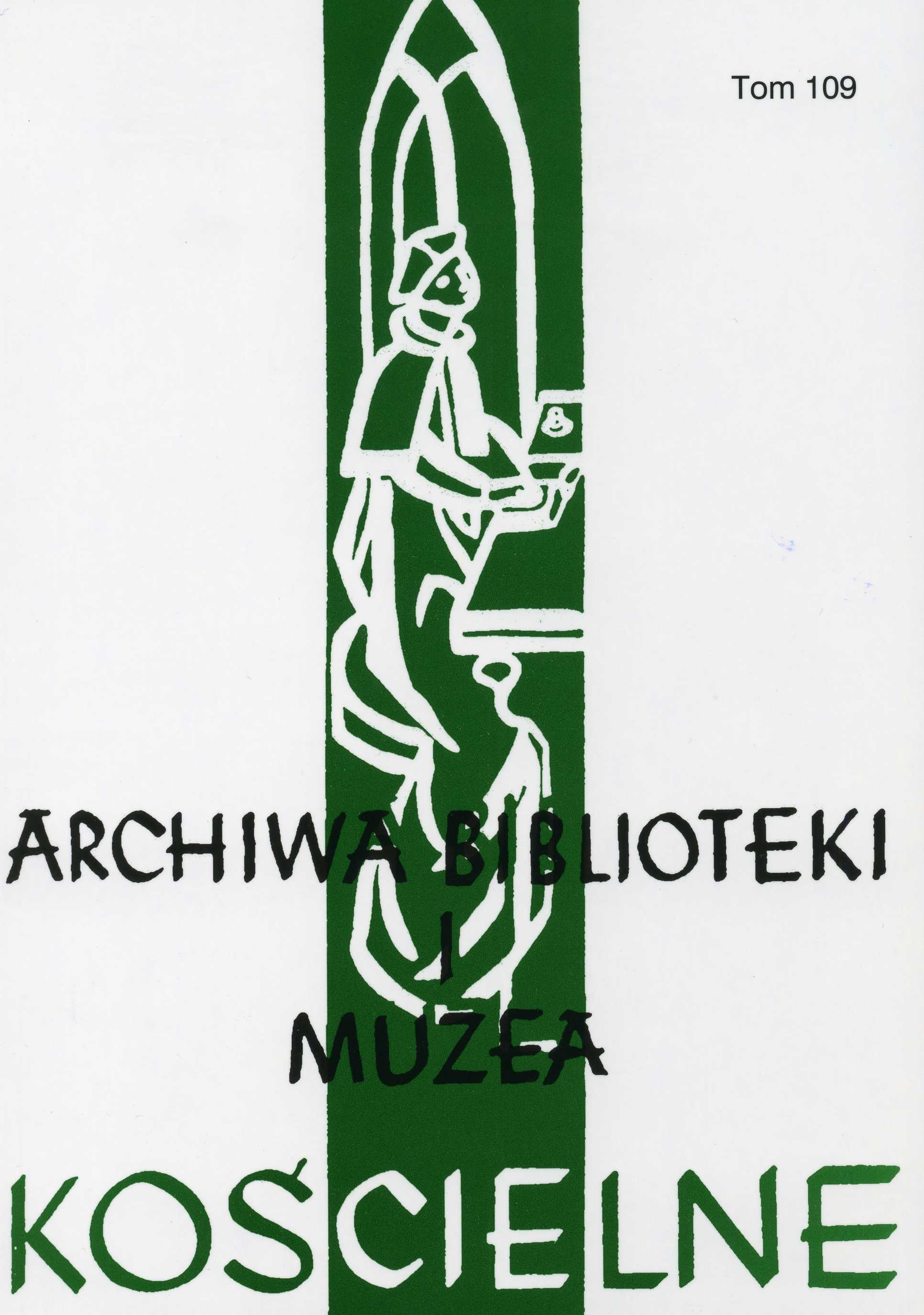Tebukonazol jako nowa substancja zastosowana do ochrony wybranych zasobów bibliotecznych pochodzących z biblioteki Romana Sanguszki
Tebuconazole is a new substance used to protect selected library resources from Roman Sanguszki Library
Author(s): Agnieszka BangrowskaSubject(s): History, Library and Information Science, Theology and Religion
Published by: Katolicki Uniwersytet Lubelski Jana Pawła II - Wydział Teologii
Keywords: conservation; fungi; fungicides; library collections; tebuconazole; triazole
Summary/Abstract: The protection of library collections is currently subject to a number of justified scientific studies of microbiological, chemical or physicochemical nature1,2. Particularly microbiological processes due to the extensive and destructive effects that include irreversible changes in library collections cause the search for new substances and methods to inhibit and protect certain materials from the action of fungi and other physicochemical agents 3. Fungicides include substances that we call fungicides fungicidal and fungal. The basic component determining the specificity of a plant protection product used for book conservation is the substance biologically active in relation to certain organisms, i.e. which causes the disorder of the physiological processes by blocking the activity of the respective enzymes. We share them with surface-active fungicides, whose task is to block the breathing process. These include copper, sulfuric fungicides, triocarbonyl derivatives, dithiocarbamates, aromatic hydrocarbon derivatives, dicarboximide fungicides. The second group, in turn, include surface and internal fungicides. This is a systemic (systemic) action that involves the development of various pathogens and the inhibition of the destruction of the paper. These include: anilino pyrimidine, benzimidazole, phenylamides and triazole. The main aim of the study was to use tebuconazole from a number of tested triazole compounds as a novel substance to combat microbiological hazards in historic library collections. 24 volumes of dictionaries from the Library of Roman Sanguszka from 1803 were covered. Preservation of collections was good except for AN-XI volume, where there were evident traces of microbial activity, characteristic spots and discolourations, and therefore the presence of fungal colonies. In addition, paper fragments were visible. The remaining volumes were clean, without stains, traces of floods and humidities, which allowed them to be considered non-disinfection objects. Volume XI was subjected to a microbiological test which confirmed the presence of Penicillium chrysogenum. Its mechanism of biological activity is the inhibition of ergosterol, the substance building blocks of the cell membrane. Before the right investigation, the biological activity of the fungicides was refered in the ancient book preservation process, involving the appointment of the so-called. LD50 coefficients, i.e. how amount of the substance is needed to destroy half the population of pathogens. The LD50 is used to determine the concentration of working fluid, which should be sprayed on the surfaces of the protected material: paper, parchment, leather or fabric, providing the required protective efficacy.
Journal: Archiwa, Biblioteki i Muzea Kościelne
- Issue Year: 2018
- Issue No: 109
- Page Range: 9-17
- Page Count: 9
- Language: English, Polish

